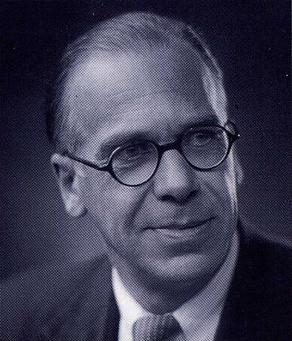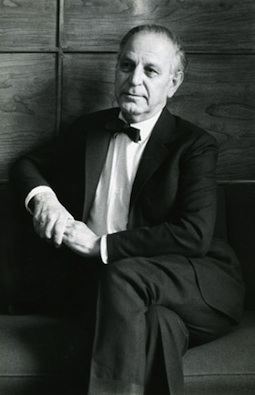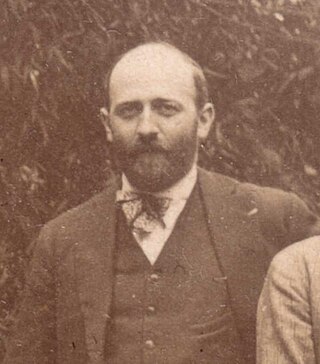Related Research Articles
Robert Wilfred Levick Simpson was an English composer, as well as a long-serving BBC producer and broadcaster.

A string orchestra is an orchestra consisting solely of a string section made up of the bowed strings used in Western Classical music. The instruments of such an orchestra are most often the following: the violin, which is divided into first and second violin players, the viola, the cello, and usually, but not always, the double bass.
The Violin Concerto No. 1 in A minor, Op. 77, was originally composed by Dmitri Shostakovich in 1947–48. He was still working on the piece at the time of the Zhdanov Doctrine, and it could not be performed in the period following the composer's denunciation. In the time between the work's initial completion and the first performance, the composer, sometimes with the collaboration of its dedicatee, David Oistrakh, worked on several revisions. The concerto was finally premiered by the Leningrad Philharmonic under Yevgeny Mravinsky on 29 October 1955. It was well-received, Oistrakh remarking on the "depth of its artistic content" and describing the violin part as a "pithy 'Shakespearian' role."

Nikolai Yakovlevich Myaskovsky, was a Russian and Soviet composer. He is sometimes referred to as the "Father of the Soviet Symphony". Myaskovsky was awarded the Stalin Prize five times.

Mendelssohn's Piano Concerto No. 1 in G minor, Op. 25, was written in 1830–31, around the same time as his fourth symphony ("Italian"), and premiered in Munich on 17 October 1831. This concerto was composed in Rome during a travel in Italy after the composer met the pianist Delphine von Schauroth in Munich. The concerto was dedicated to her. Mendelssohn attended one party after another in Munich in October 1831, the month of the premiere, but he also played chamber music and taught double counterpoint. He performed the piece himself at the premiere, which also included performances of his Symphony No. 1 and the Overture from Midsummer Night's Dream. He had already written a piano concerto in A minor with string accompaniment (1822) and two concertos with two pianos (1823–24).

William Alwyn, was an English composer, conductor, and music teacher.

Ulvi Cemal Erkin was a member of the pioneer group of symphonic composers in Turkey, born in the period 1904–1910, who later came to be called The Turkish Five. These composers set out the direction of music in the newly established Turkish Republic. These composers distinguished themselves with their use of Turkish folk music and modal elements in an entirely Western symphonic style.

Alexander Grigori Arutiunian, also known as Arutunian, Arutyunyan, Arutjunjan, Harutyunian or Harutiunian, was a Soviet and Armenian composer and pianist, widely known for his 1950 Trumpet Concerto. A professor at Yerevan State Conservatory, he was recognized with many awards for his work, including the Stalin Prize in 1949 and People's Artist of the USSR in 1970, as well as numerous honors from his homeland of Armenia.
Lev Konstantinovich Knipper was a Soviet and Russian composer of partial German descent and an active OGPU/NKVD agent.
Jānis Ivanovs was a Soviet and Latvian classical music composer.

Maximilian Osseyevich Steinberg was a Russian composer of classical music.

Alexis Fernand Félix Jean Rivier was a French composer of classical music in the neoclassical style.
Nikolai Petrovich Rakov, was a Soviet violinist, composer, conductor, and academic at the Moscow Conservatory where he had studied. He composed mostly instrumental works, for orchestra, chamber music and piano music, especially pedagogic works. In 1946, he received the Stalin Prize for his first violin concerto, which became known internationally.

The String Quartet No. 3 in D major, Op. 44, No. 1, was composed by Felix Mendelssohn(1809-1847) in July 1838 at the age of 29. It premiered in 1839, then was published later in 1840. It is a traditional quartet, comprising two violins, a viola, and a cello. The piece is part of the Op. 44 set of 3 string quartets that Mendelssohn dedicated to the Crown Prince of Sweden.
An organ concerto is an orchestral piece of music in which a pipe organ soloist is accompanied by an an orchestra, although some works exist with the name "concerto" which are for organ alone.
Symphony No. 1 by Soviet-Russian composer Gavriil Nikolayevich Popov is a composition that was banned from performance in the USSR. Popov had completed a sketch of the first movement by August 1929 and was preparing its last (third) movement by February 1930. The work, still in draft form, won a prize sponsored by the Bolshoi Theatre and the newspaper Komsomolskaya Pravda in September 1932. It received its premiere by the Leningrad Philharmonic Orchestra under conductor Fritz Stiedry on March 22, 1935.
Sviatoslav Nikolayevich Knushevitsky was a Soviet-Russian classical cellist. He was particularly noted for his partnership with the violinist David Oistrakh and the pianist Lev Oborin in a renowned piano trio from 1940 until his death. After Mstislav Rostropovich and Daniil Shafran, he is spoken of as one of the pre-eminent Russian cellists of the 20th century.
Symphony No. 1 in B-flat major, Stiles 1.3.4.1 Sy1, the so-called Maori Symphony, is the first symphony by Alfred Hill. Its first three movements were completed by 1898, but the last movement remained unfinished. This may have been the second symphony composed in the Antipodes. The first two movements of this symphony are the only symphonic movements by Hill not to be arranged from his earlier chamber music. The Finale was reconstructed by Allan Stiles, and the whole symphony got its first performance in 2007. The approximate duration is 40 minutes.
References
- ↑ Northern Flowers 2009 release booklet, by Iosif Raiskin
- ↑ MusicWeb International – Soviet Symphonies
- ↑ Classique-info Disque [ permanent dead link ]